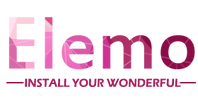This is What You Need to Know About "Indirect Heat" | Elemo Hair
Dec 15, 2022
 As many curly girls fear heat damage, some take extremes on eliminating the possibility of it from their strands. I was one such person a few years ago and ditched all my heat tools including my hooded dryer. In all fairness, I hated that thing with a passion and have been known to shorten my time under a hooded dryer while in a salon when no one was looking.
As many curly girls fear heat damage, some take extremes on eliminating the possibility of it from their strands. I was one such person a few years ago and ditched all my heat tools including my hooded dryer. In all fairness, I hated that thing with a passion and have been known to shorten my time under a hooded dryer while in a salon when no one was looking.
Question
Does using a bonnet dryer qualify as using direct heat on hair? I've set myself up on an 8 month no heat/chemical challenge, which has kept me away from my coveted diffuser. I plan my wash schedule around the amount of time I think it will take my hair to fully dry so I can wear it out for a few days. One section of my hair takes longer to dry than the rest of it so I've resorted to using my Andis bonnet, that I usually use for deep conditioning, to dry my hair. Just to be clear I put it to use when my hair is about 90% dry. I do this in fear of it causing heat damage. So my question is when using a bonnet dryer is it considered direct heat? Or is it indirect since it’s more so an inflated heated space?
Answer
What is direct heat?
Direct heat is heat styling tools that directly touch or are in close proximity to the strands like a flat iron, hot comb, blow-dryer (without a diffuser attachment), curling iron, curling wand, and hot rollers. These tools have a greater chance of causing heat damage. Using these tools on low heat with a heat protectant decreases the potential for heat damage.
What is indirect heat?
Indirect heat is using tools to create a style or dry the hair without coming into direct contact with the heat, making your strands less vulnerable to heat damage. Excellent examples of indirect heat for hair would be the hooded dryers, the soft bonnet dryers, or hair steaming as they may be closer to your head but they still do not directly touch the hair strands. A lot of curly girls will use dryers for roller sets or deep conditioning but they are also great for using at the end of air drying your hair to ensure all strands are completely dry. Even though they are indirect sources of heat, you should still use the lowest setting possible to adequately dry the hair as it is still a heat source.
Which is better?
Indirect heat is better because it has a lower chance of causing heat damage and it is quite useful for deep conditioning and speeding up the drying time. Direct heat should be used sparingly and always with a heat protectant formulated with silicones, as they help create a barrier between your strands and the heat styling tool. Heat can be a positive part of curly hair maintenance as long as you use it wisely and know the differences of direct and indirect heat sources.
This is Elemo family for all Elemo hair lovers. We are so glad you join us!💛
You'll be enjoy all kinds of rewards, including the exclusive discount, giveaway every month, rewards, free gifts...
You can share your bought items & Share your opinion, get involved as much as possible, recommend good products to others in this group🌹
Show your confidence, curves, and love yourself forever.
Big hugs,
Your Elemo-group Team🌠✨
Now Join our free FB group, Elemo Hair (Share & Get Free Wig)
>>www.facebook.com/groups/461288172335313/

